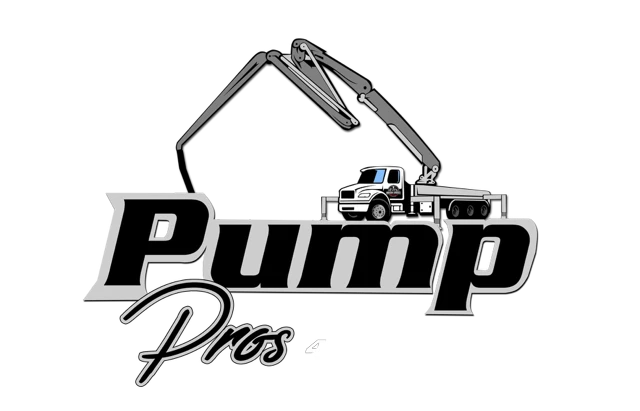Explore common issues with 2.5-inch line pumps in Billings, MT. Learn how residential and commercial concrete line pump services resolve them effectively.
When it comes to concrete pumping in Billings, MT, the 2.5-inch line pump stands out as a vital tool for both residential and commercial projects. These compact, flexible systems are ideal for tight access areas and are favored by many residential concrete line pump solutions and commercial line pump contractors for their adaptability and efficiency. But like any equipment, they are not without their challenges.
In this article, we’ll explore the most common problems encountered with 2.5-inch line pumps and how to troubleshoot them effectively. Whether you’re a contractor, homeowner, or project manager, understanding these issues can help avoid project delays and ensure smooth concrete placement.
A 2.5-inch line pump is a type of concrete line pump for foundation work and other construction tasks requiring precision and accessibility. Unlike boom pumps, line pumps are ideal for small to medium-sized projects, particularly in hard-to-reach locations.
The portable concrete line pump hire market has grown significantly in areas like Billings, MT, due to the region’s varied terrain and increasing number of custom construction projects. This type of pump is particularly valuable for small-scale concrete line pumping services.
Common Issues with 2.5-Inch Line Pumps & How to Troubleshoot Them
Clogged Lines
Problem: The most frequent issue in line pumping is clogging, often due to improper concrete mix or delayed pumping.
Troubleshooting:
Ensure your concrete mix meets pump specifications.
Use proper priming materials before pumping.
Flush the system immediately after use to prevent buildup.
Pro Tip: A cost-effective line pump for tight spaces often uses a slick line or rubber hose; keep these clean and inspect for hardened concrete regularly.
Low Pump Output
Problem: Sometimes the pump operates, but the concrete isn’t coming out as fast or consistently.
Troubleshooting:
Check for air leaks in the system.
Inspect the hydraulic system for low pressure.
Ensure hoses are not kinked or bent.
For both residential concrete line pump solutions and larger commercial setups, maintenance of the hydraulic system is critical to maintain pressure.
Engine or Motor Issues
Problem: Engine failures can halt your project completely.
Troubleshooting:
Regularly change oil and filters.
Ensure the cooling system works properly.
Check for fuel line blockages or battery failure.
Whether you’re managing a commercial line pump contractor team or DYing a backyard slab, reliable engine performance is key to operational success.
Premature Wear on Parts
Problem: Frequent use in abrasive environments causes hoses, clamps, and pistons to wear faster.
Troubleshooting:
Rotate hoses periodically to distribute wear.
Replace worn parts at the first sign of damage.
Use quality parts suitable for 2.5-inch systems.
Remember, cutting corners here can cost more later, especially when relying on portable concrete line pump hire options.
Hose Whipping or Blowouts
Problem: Pressurized hoses may whip uncontrollably if not handled correctly, posing safety hazards.
Troubleshooting:
Always secure hoses properly.
Bleed air from the line before starting.
Train your team on safe hose handling practices.
This is especially important for commercial line pump contractors, where multiple team members may be operating different ends of the line.
Blockages in Narrow Spaces
Problem: Tight spaces increase the risk of line kinks and blockages.
Troubleshooting:
Use flexible hoses specifically designed for small-scale concrete line pumping services.
Position lines to minimize sharp bends.
Use elbows and adaptors designed for tight areas.
Benefits of 2.5-Inch Line Pumps in Billings, MT
Despite these common challenges, many construction professionals in Billings rely on 2.5-inch line pumps because of their flexibility and adaptability.
Why Choose a 2.5-Inch Pump?
Cost-effective line pump for tight spaces and residential jobs
Easier access to backyards, basements, and narrow alleys
Less concrete waste compared to larger pumps
Available through portable concrete line pump hire
These pumps are not just used for small tasks, they’re often part of concrete line pumps in Billings, MT for foundation work on homes, small commercial buildings, and renovations.
Hiring the Right Help in Billings, MT
If you’re experiencing recurring problems with your pump, it may be time to call in local concrete pumping experts. Look for service providers with:
Experience with residential and commercial line pump projects
Equipment tailored to tight spaces and narrow job sites
24/7 availability for emergency jobs
Choosing the right team is just as important as the equipment itself.
Conclusion
Troubleshooting Common Issues with 2.5-Inch Line Pumps in Billings, MT is essential for maintaining a smooth construction workflow. Whether you’re a homeowner looking into residential concrete line pump solutions or a commercial line pump contractor, understanding how to resolve these issues can save time, money, and frustration.
For projects that demand efficiency and precision, the 2.5-inch line pump remains a top choice, especially when paired with cost-effective line pumps for tight spaces and portable concrete line pump hire services available in Billings, MT.
FAQs
What is the maximum distance a 2.5-inch line pump can handle?
Most 2.5-inch pumps can push concrete up to 300 feet horizontally and about 100 feet vertically, depending on mix and pressure.
How often should line pump equipment be serviced?
For regular use, inspect hoses and seals daily and do a full maintenance check monthly. This ensures smooth operations for both residential and commercial line pump applications.
Is portable concrete line pump hire available in Billings, MT?
Yes, many local providers offer portable concrete line pump hire services, ideal for both small home jobs and commercial foundations.
Can these pumps handle all types of concrete mixes?
Not always. Ensure your mix is pumpable, typically with a smaller aggregate size, to avoid clogging.
What’s the difference between a boom pump and a line pump?
Boom pumps are mounted on trucks and are better for large-scale work. Line pumps, such as the 2.5-inch model, are more flexible and suitable for tight areas and smaller pores.



